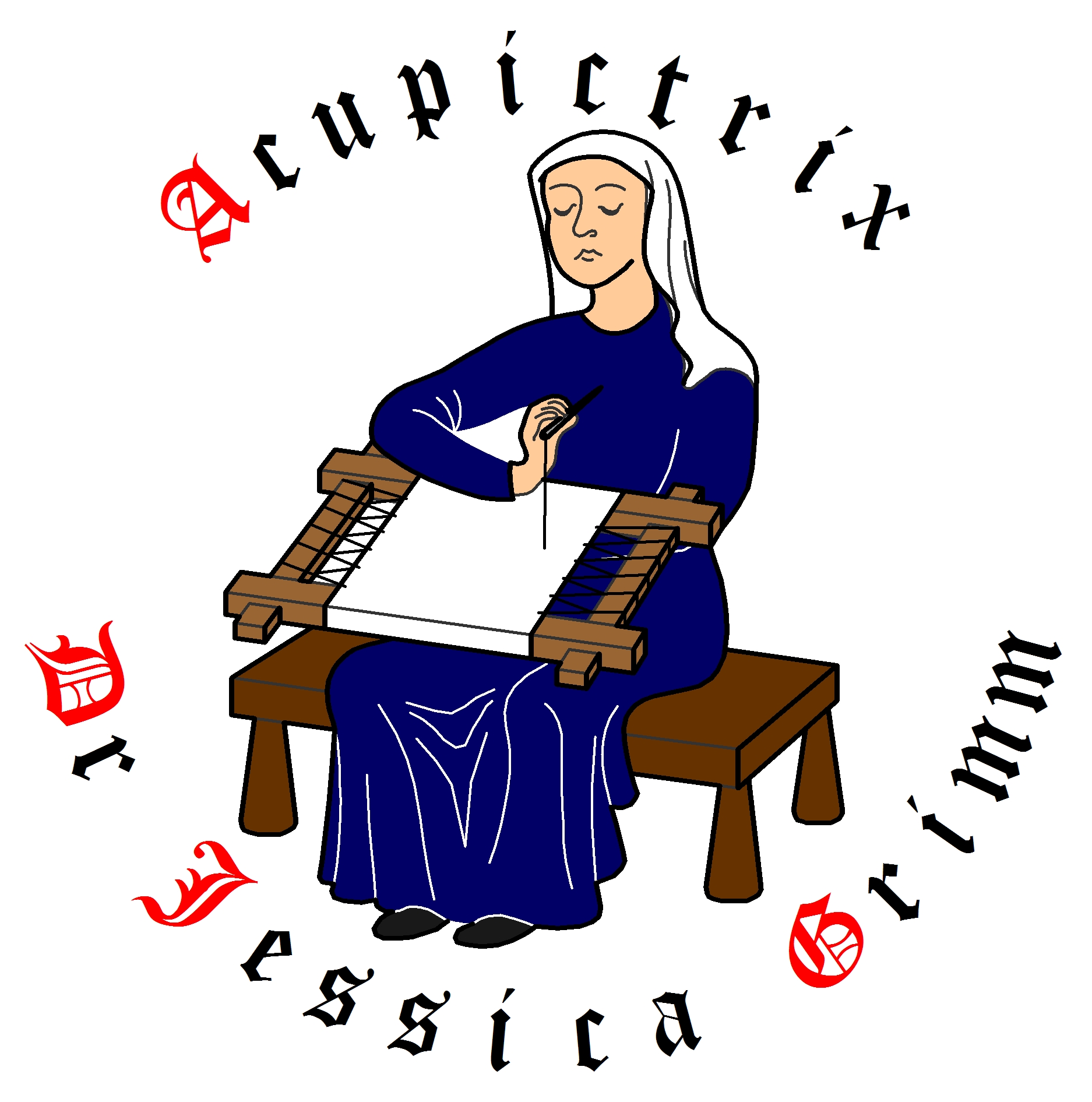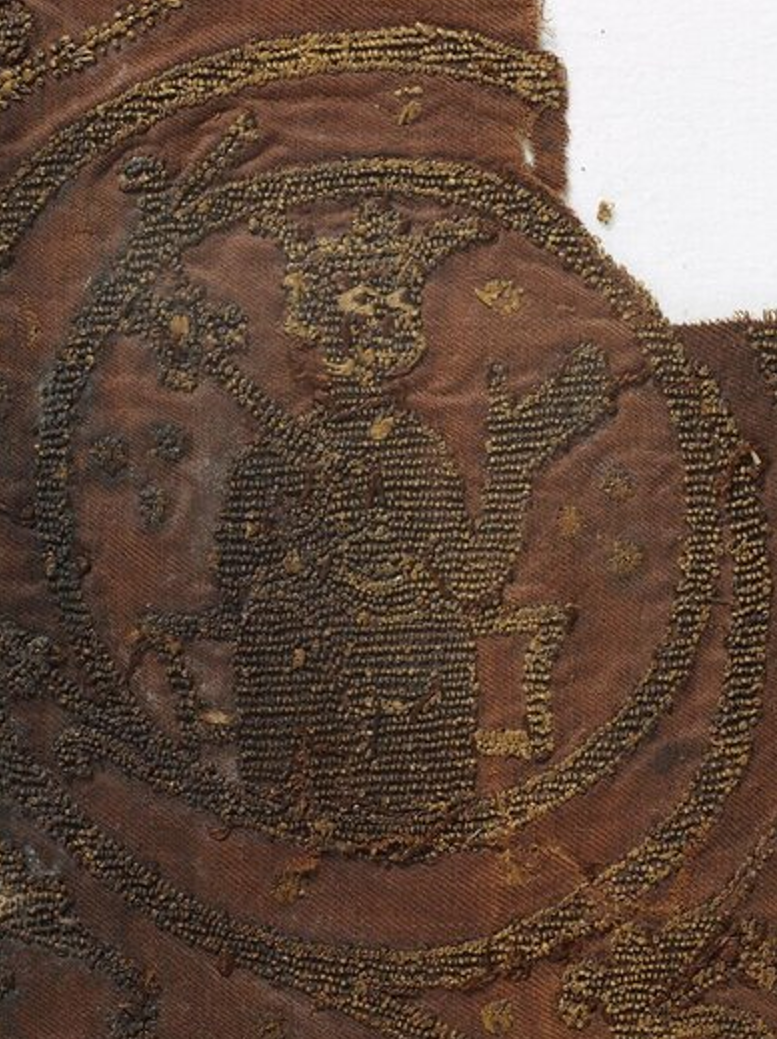Your basket is currently empty!
Category: Opus
-
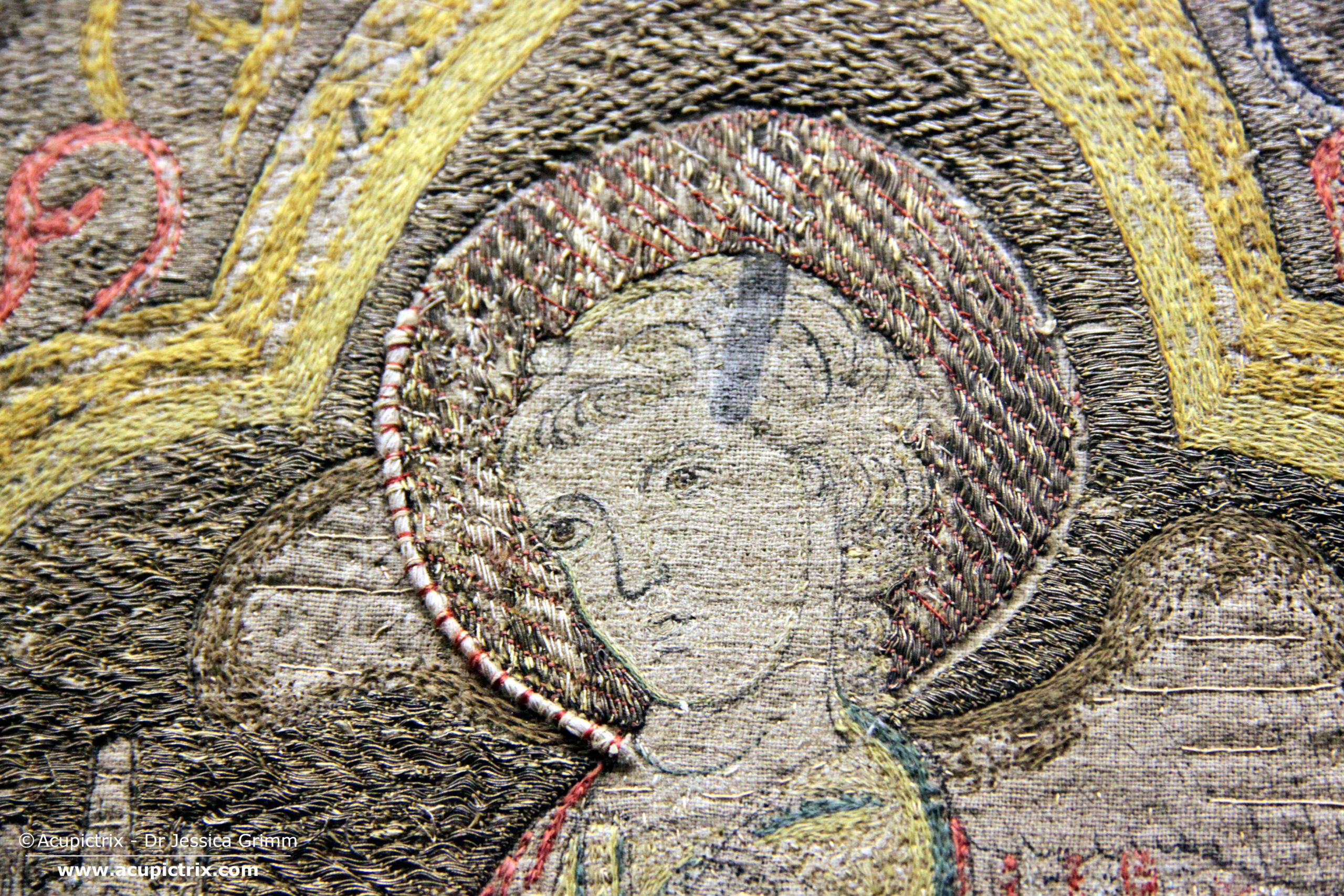
This week, we will look at an Opus romanum antependium from the late 13th century kept in the Cathedral treasury of Anagni, Italy. Just like with the Opus cyprense goldwork embroideries from last week, their provenance isn’t as clear-cut as the name Opus romanum suggests. This antependium was never historically referred to as Opus romanum.…
-
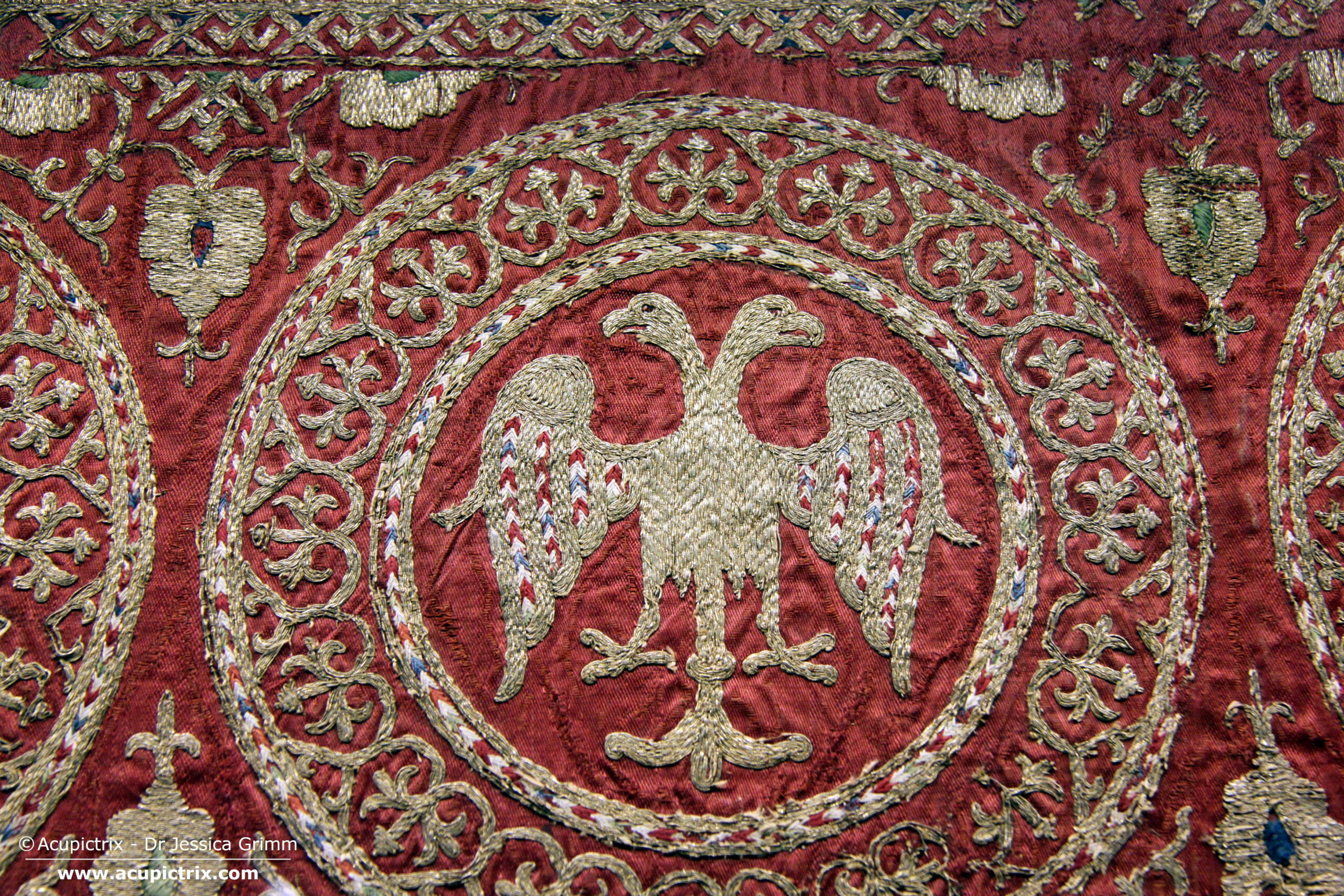
Where does Opus cyprense medieval goldwork embroidery come from? Simple question, right? After all, Opus anglicanum comes from England, and Opus teutonicum comes from Germany. Thus, Opus cyprense should come from Cyprus! Maybe. Medieval and later church inventories do mention vestments as being Opus cyprense. However, there has been relatively little research conducted on the…
-
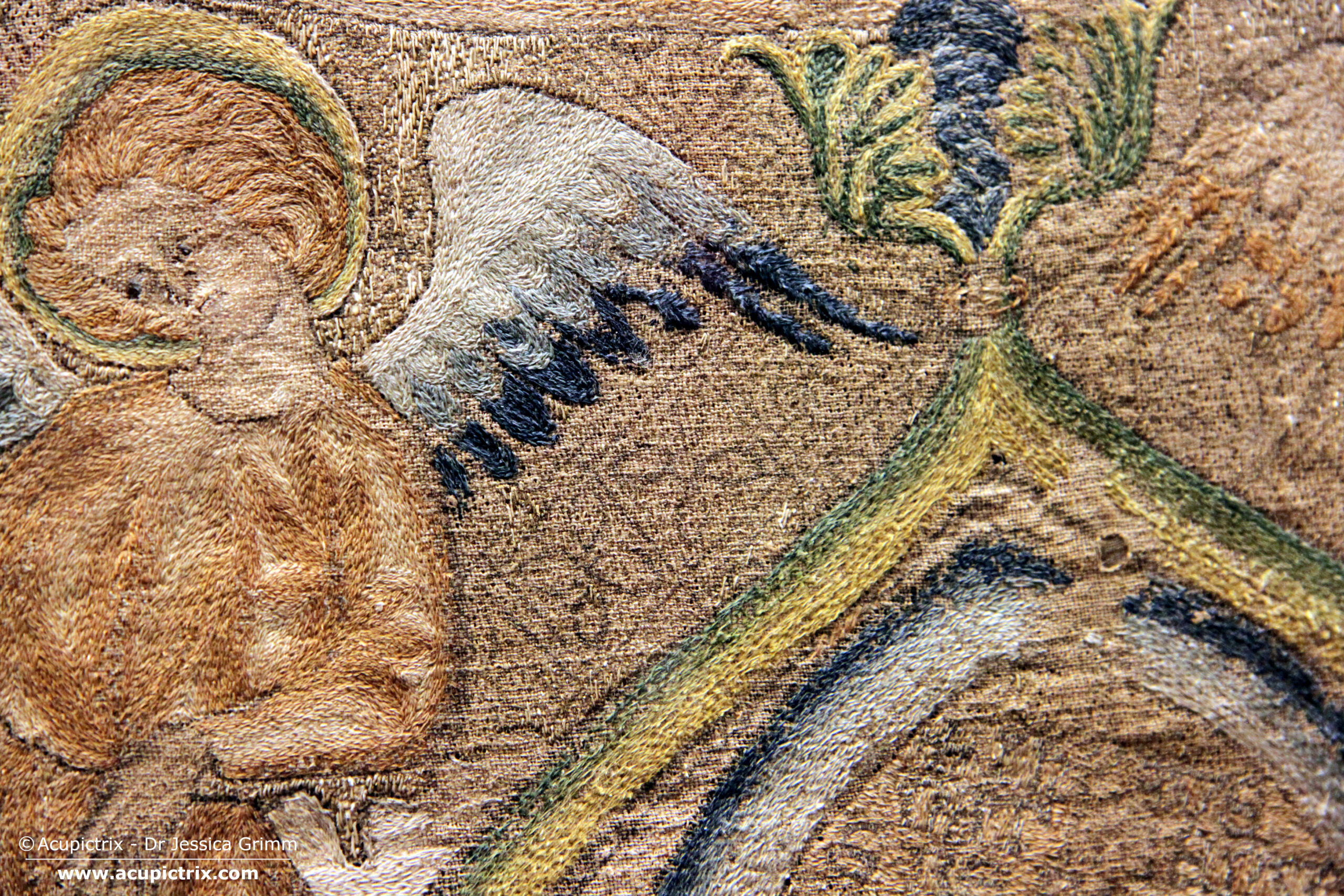
Last year, I spent many delightful hours studying the Bologna Cope at the Museo Civico Medievale in Bologna, Italy. This Opus anglicanum cope was made in England between AD 1310 and 1320. The cope was also displayed at the epic Opus anglicanum exhibition in the V&A in 2016/2017. Although the cope is missing its hood,…
-
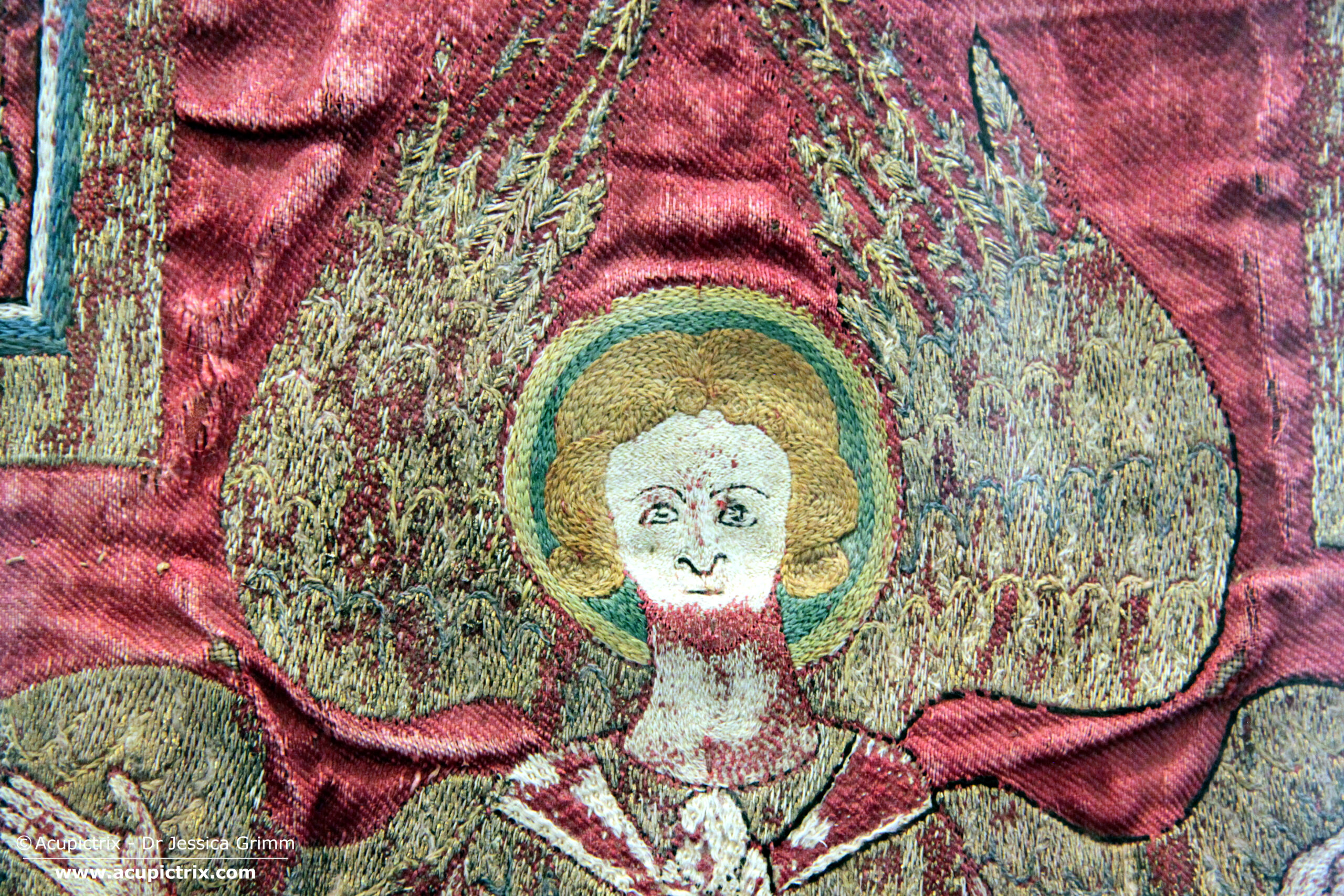
Several Italian museums hold Opus anglicanum embroidered vestments. On the one hand, this is a testament to Opus anglicanum being hugely popular with European clergy in the 13th and 14th centuries. However, it was also the result of the Italians remaining Catholic and England going through the destructions of the Reformation. Some of these splendidly…
-
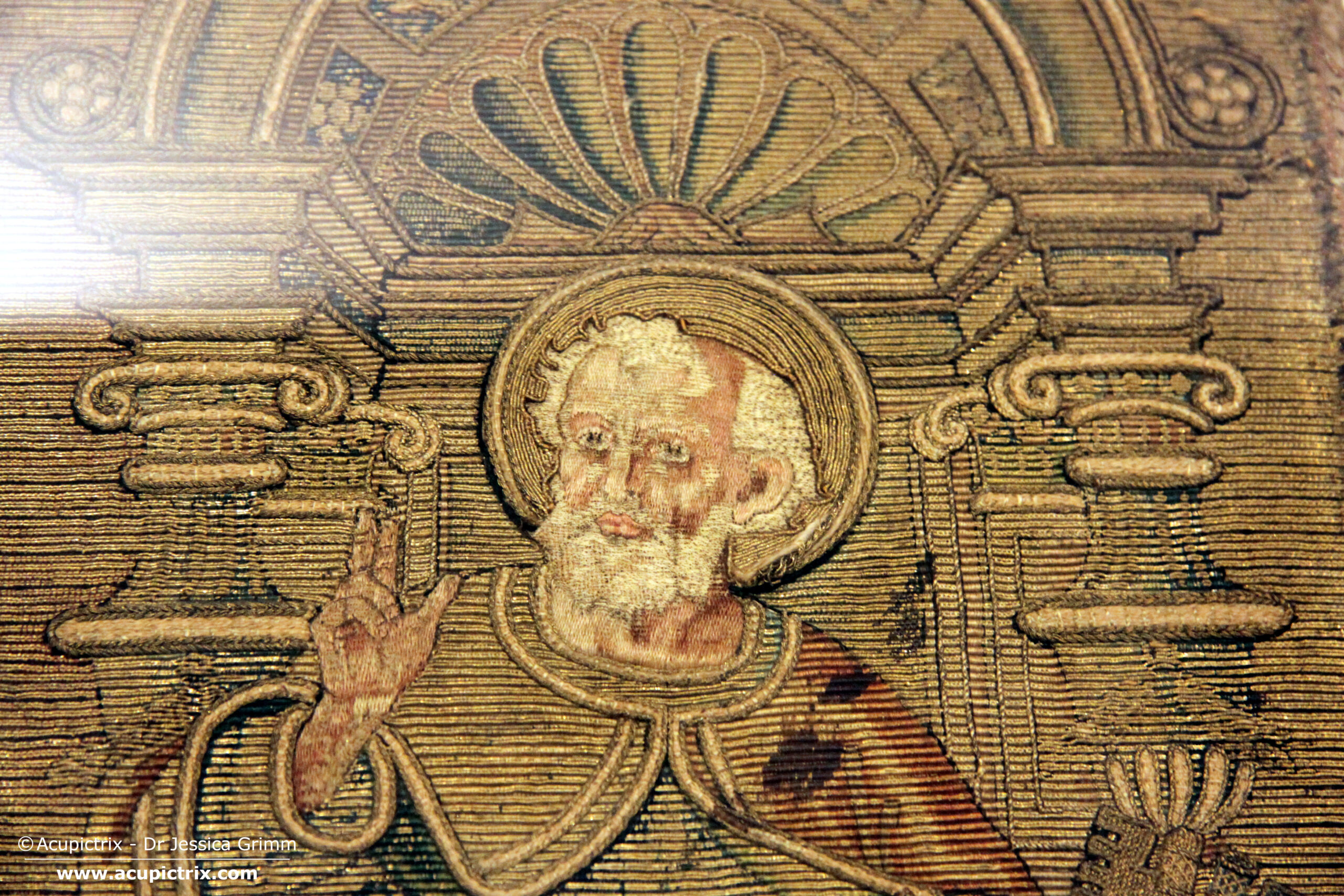
We continue our exploration of medieval goldwork from Tuscany with a couple of stunning orphreys. One is kept in a museum, one in a Cathedral, and the third is in a private collection. In 2019, they were displayed side by side in Castello Buonconsiglio. All three are of exceptional quality, both in design and embroidery…
-
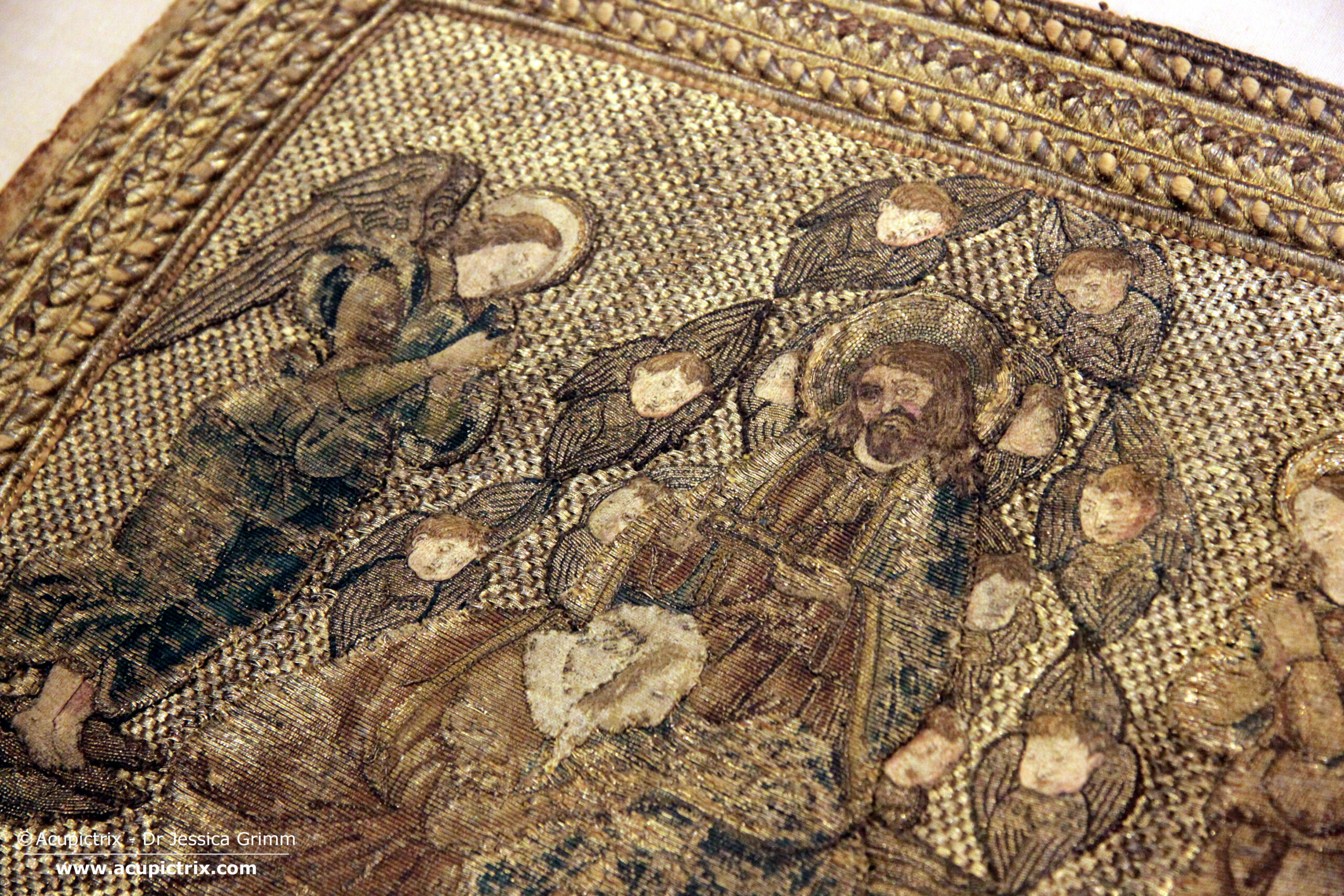
Last week, we examined the vestments made for Pope Nicholas V. Today, we continue our explorations of medieval goldwork from Tuscany, Italy with a cope hood made in Florence in the first quarter of the 16th century. The design of the Coronation of the Virgin is attributed to Sandro Botticelli (AD 1445-1510). Whether this means…
-
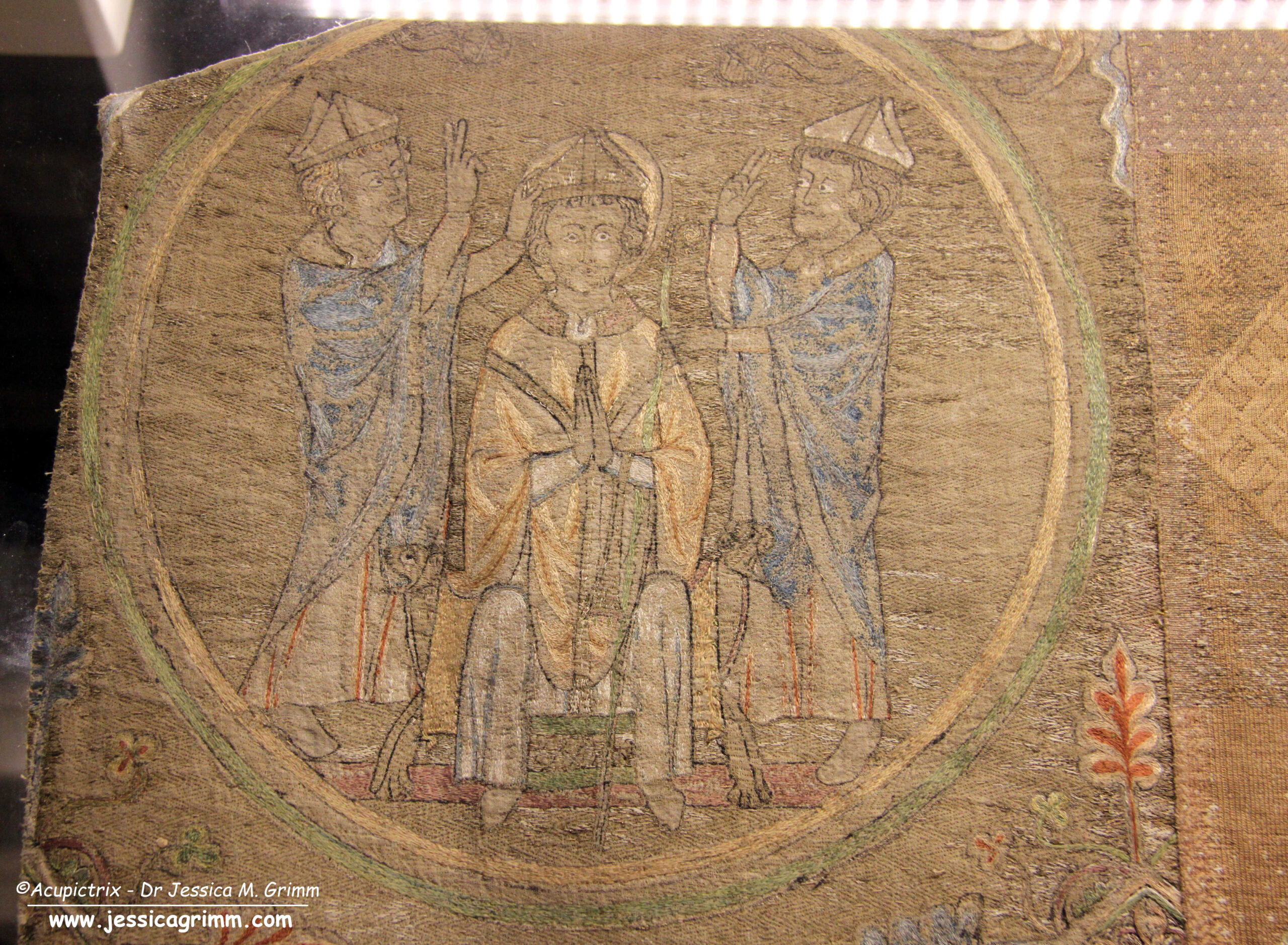
A couple of weeks ago, I was fortunate enough to finally visit the Cathedral Treasury of Anagni near Rome, Italy. The treasury houses several pieces of Opus anglicanum, not only the namesake cope. One of these pieces is the chasuble, which you can see below. However, this vestment started life as a dalmatic. It was…
-
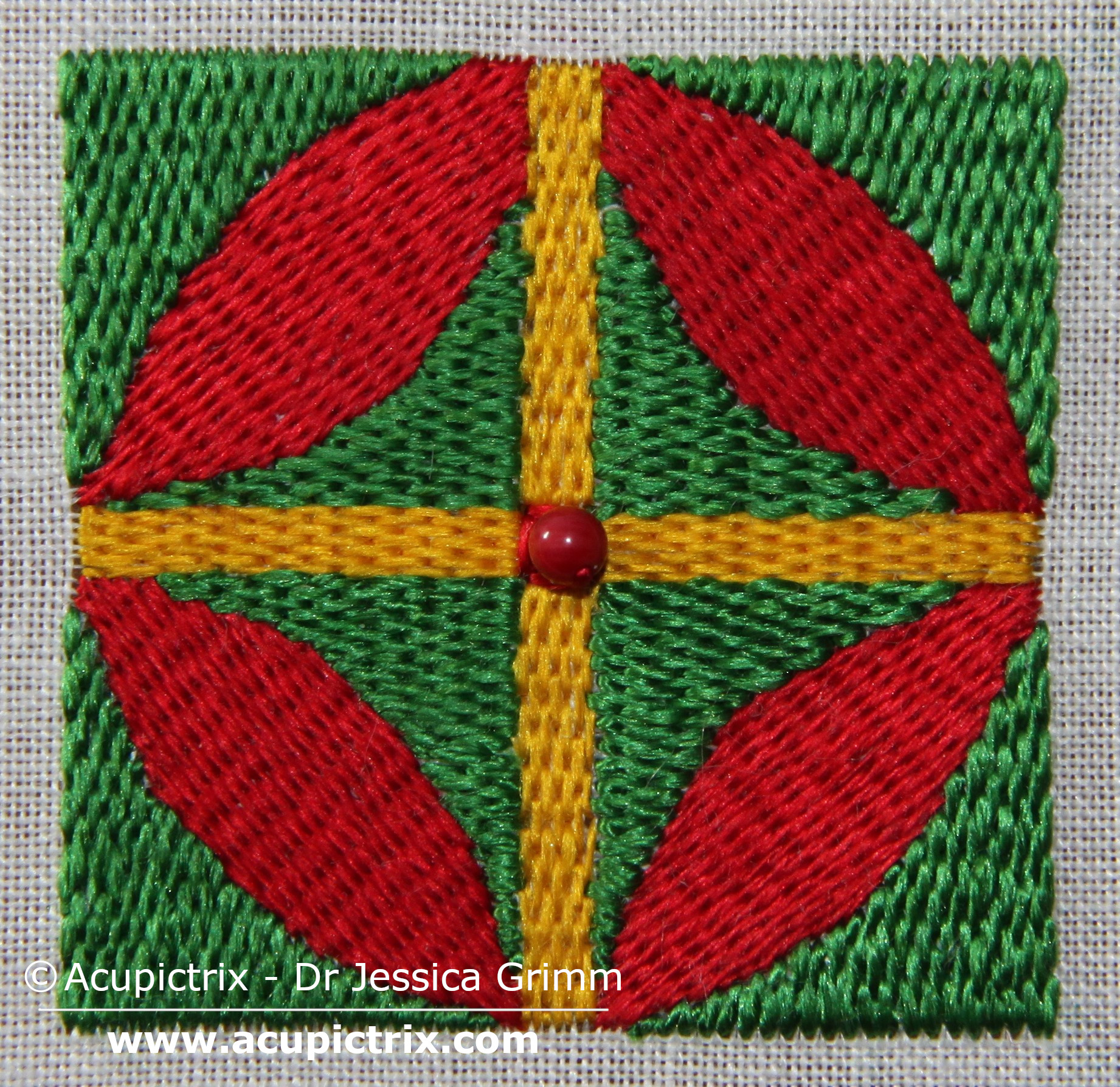
Last week, I discussed some Opus anglicanum pieces that show underside couched silk worked in a brick pattern. I wondered what the benefits were of using underside couching instead of traditional brick stitch. As I had done underside couching with a metal thread before, I imagined that underside couching with silk would be equally slow and cumbersome.…
-
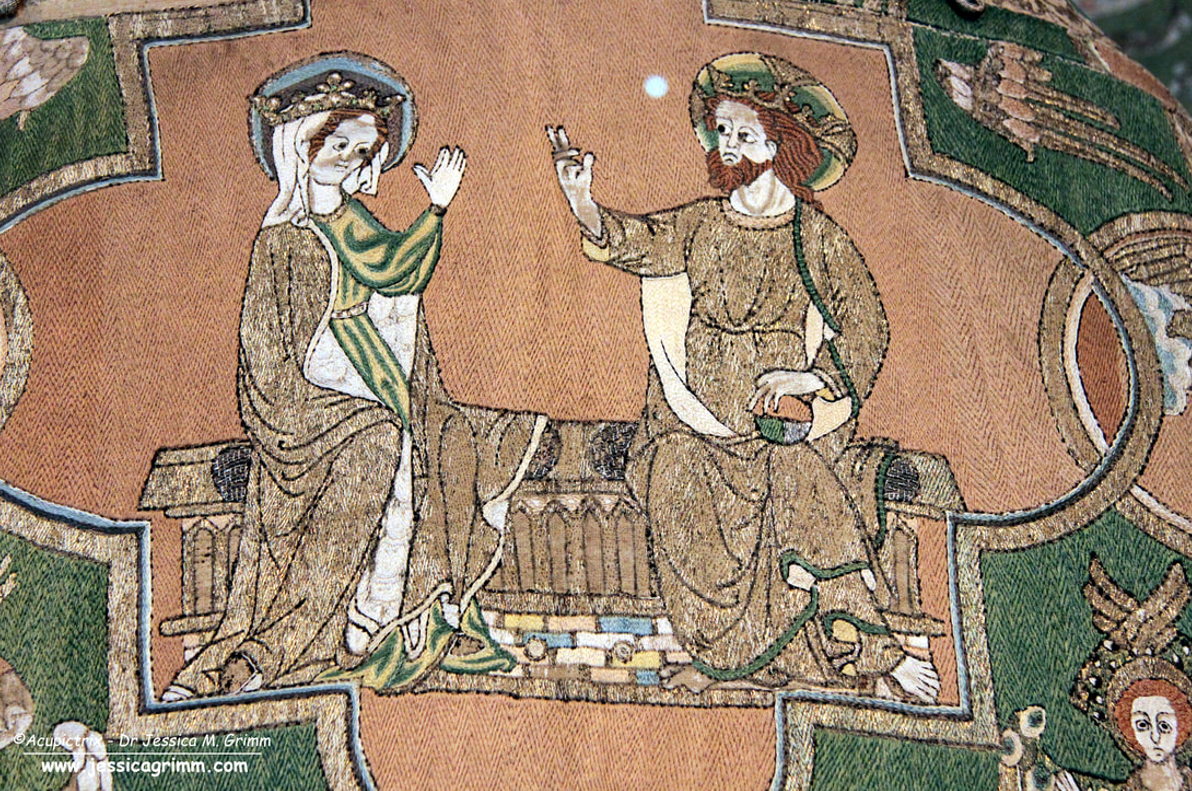
While researching the grave finds of some of these bishops and kings, I also came across other small embroidered pieces that piqued my curiosity. When we think of Opus anglicanum, we think of underside couched gold threads. However, the embroiderers also underside couched silk. The most famous example is the Syon cope. The background consists entirely of…
